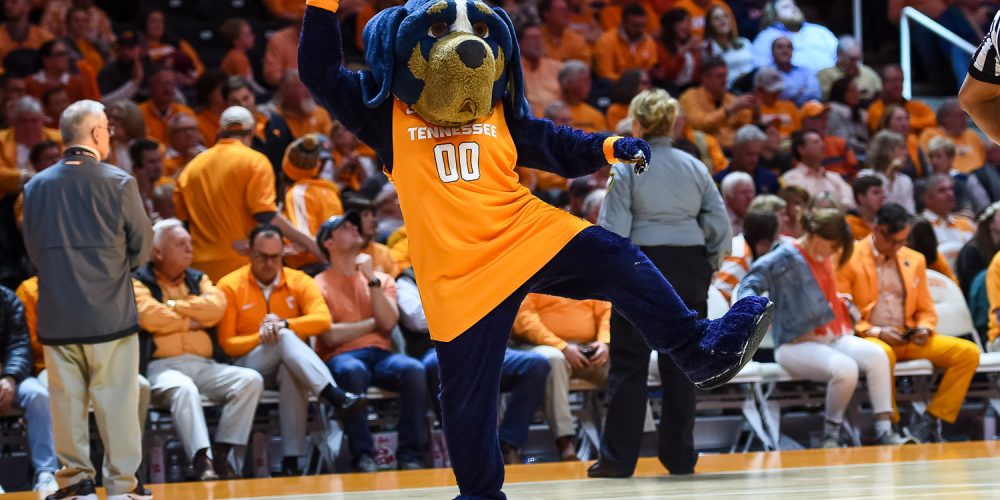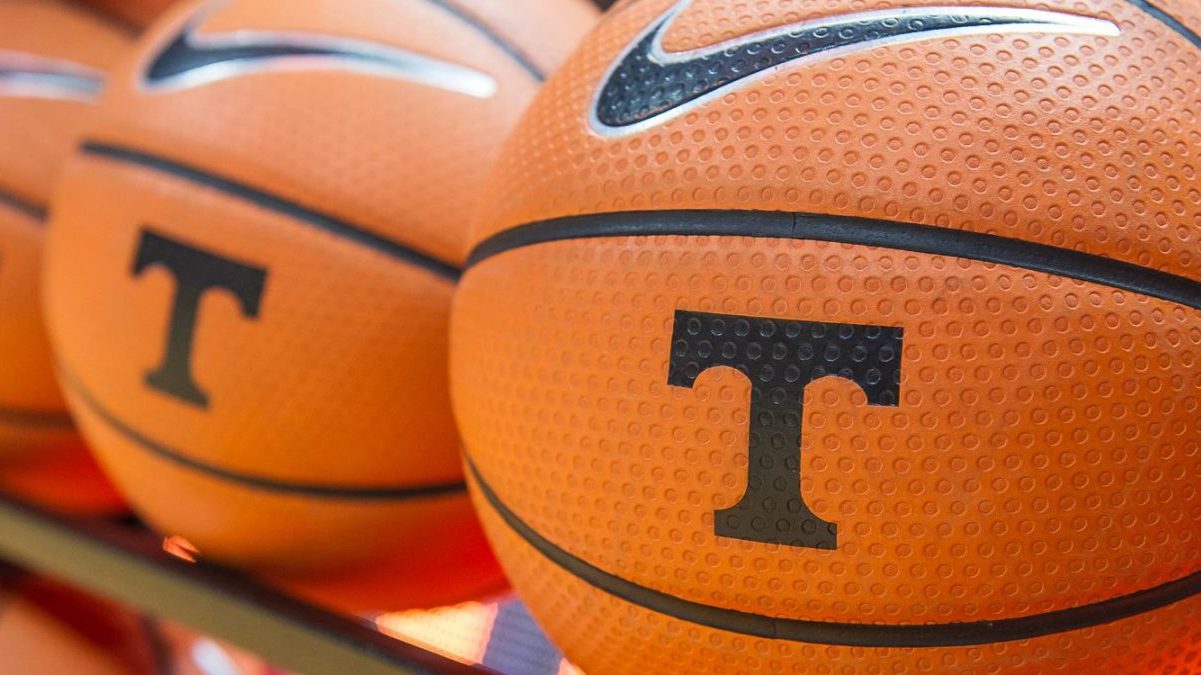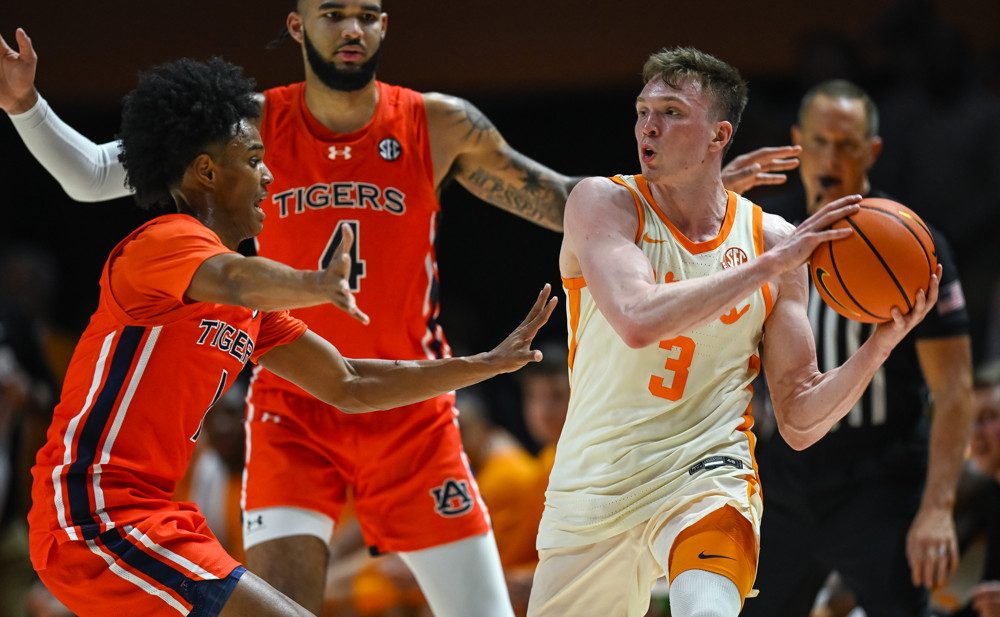Six years ago tomorrow, Tennessee went to Alabama and put a beat down on the Tide 76-59. The win moved Cuonzo Martin’s squad to 14-7 (5-3), in position to capitalize on its last ten games and make the tournament with room to spare. In response, they lost four of their next six, a stretch that ended with an overtime loss at Texas A&M (KenPom 138 at tip-off). The Vols were 16-11 (7-7) with no opportunities left for marquee victories.
The lesson from that year is hopefully easier learned when we’re not dealing with petitions at the same time: don’t quit on your team until the math says they can’t earn an at-large bid. Those Vols won four in a row, the last three by an average of 31 points, then beat South Carolina by 15 in the second round of the SEC Tournament, then flirted with victory against 31-2 Florida on Saturday. That was all just enough to get them to Dayton. And as that team will also remind you, all you’ve gotta do is get in: four games later they were a disputed charge call from the Elite Eight.
So yeah, the current Tennessee team did themselves zero favors in losing to another Texas A&M team with a triple digit KenPom on another lucky three. What would’ve been a tidy resume on a soft bubble now has Tennessee’s first bad loss of the year. And as much as anything, it’s one more win the Vols won’t have for a team looking to get in on strength of schedule and late-season improvement, not a big win total.
What follows is (hopefully!) the beginning of an exercise we do around here whenever the Vols are on the bubble: how does the bracket’s past inform its present, and how likely are the Vols to hit those historical benchmarks for a team that gets in? The NCAA’s change from RPI to NET means we say goodbye to lots of research, since we haven’t had to worry about the bubble the last couple years.
Here’s the good news: if Tennessee is going to get to 19+ wins, they’re going to have to beat good teams along the way. If they’re going to beat good teams, it’s because they’re getting better. If they’re close, it’s because they got quality wins to get there. That argument really does feel like the only way in for this team. And, thanks to roster shakeup, it goes a little farther than the average bear: Tennessee has still only played five games with both Santiago Vescovi and Uros Plavsic.
So the same rules apply, as always: get better, get wins. The margin of error has simply shrunk to create incredibly meaningful outcomes every time out now. They’re not all must-win – an 11-0 finish probably means an SEC title! – but the Vols have eleven opportunities left to get as close to 20 wins as possible, facing a schedule that makes almost nothing easy.
So here, for as long as we can enjoy it, is what I think it’ll take to get the Vols on the bubble.
The Bottom Line: 19-15
Since the tournament expanded to 68 in 2011, eight teams earned an at-large bid with 14 losses on Selection Sunday. Plus, in each of the last three years, an SEC team has danced with 15 losses. In 2011 Marquette danced at 20-14. Each of the other ten teams to get in with 14 or 15 losses all won 19 games. (Fun fact: only one went to Dayton!)
| Year | Team | Record | Seed |
| 2019 | Florida | 19-15 | 10 |
| 2019 | Ohio State | 19-14 | 11 |
| 2018 | Texas | 19-14 | 10 |
| 2018 | Alabama | 19-15 | 9 |
| 2017 | Vanderbilt | 19-15 | 9 |
| 2017 | Michigan State | 19-14 | 9 |
| 2011 | Marquette | 20-14 | 11 |
| 2011 | Michigan State | 19-14 | 10 |
| 2011 | Southern Cal | 19-14 | Dayton |
| 2011 | Tennessee | 19-14 | 9 |
| 2011 | Penn State | 19-14 | 10 |
If you’re looking for the kind of soft bubble year that could materialize this season, 2011 is a good example. A common thread here: these are all power conference teams, and with the exception of Penn State and Southern Cal in 2011, they all carry good-to-great name brands.
(Also, Oklahoma State got in at 18-13 in 2015, but that record isn’t available to Tennessee; the closest the Vols could come would be an 18-13 regular season finish plus whatever happened in the SEC Tournament.)
So any conversation about Tennessee getting in has to land, historically speaking, with the Vols finishing at 19-15 or better.
In KenPom, 10 of those 11 teams had a Top 25 strength of schedule; the 11th was 2011 USC, who went to Dayton with a schedule rating of 36. Tennessee’s strength of schedule is currently 65th, but as we’ll see, that’s getting ready to rise. How high? Well…
It goes without saying you want the non-conference teams the Vols played to all do well (yes, even Memphis). Therein lie some potential problems: Washington was 10-2 but now sits at 12-10 (2-7); four of their last five losses came in overtime, overtime, by one, and by three. VCU gets another shot at Dayton in Richmond on February 18.
At the moment, those are both Quad 1 wins for Tennessee. They both came with Lamonte Turner, but that’s really only an argument you make if the Vols come up short on Quad 1 wins in general, and if they do that, they’re not going to be anywhere near the bubble anyway.
Here Comes Quad 1
Quad 1 in the NET ratings is a home win over a Top 30 team, a neutral win over a Top 50 team, and a road win over a Top 75 team. VCU is currently 33rd in NET; Kansas and Florida State are safe barring total collapse. Washington is currently 48th; it would help if they stayed in the Top 50.
But if you want opportunity, behold:
| Opponent | Current NET | Quad |
| at Mississippi St | 43 | 1 |
| at Alabama | 40 | 1 |
| Kentucky | 23 | 1 |
| Arkansas | 38 | 2 |
| at South Carolina | 75 | 1 |
| Vanderbilt | 165 | 4 |
| at Auburn | 27 | 1 |
| at Arkansas | 38 | 1 |
| Florida | 42 | 2 |
| at Kentucky | 23 | 1 |
| Auburn | 27 | 1 |
Again: if the Vols even approach the bubble, they’ll have done so with quality wins.
Paths to the Bubble
If 19-15 is a proven minimum, the Vols can get at least there a number of ways. Let’s do something A&M proved clearly unsafe, and assume the Vols beat Vanderbilt in Knoxville on February 18. That would be a second Quad 3/4 loss (Texas A&M is currently 126th in NET and needs to stay above 160 the rest of the way to prevent the Vols from having a Quad 4 loss). Vanderbilt can be feisty, but is still 0-7 in league play. A loss to the Commodores in Knoxville would be catastrophic.
So, let’s give ourselves that one. That’s 13 wins with 10 other games on the table. The pain of losing to A&M is felt most here: win that one, and you’ve got a really nice argument to just go 5-5 in these last ten games, and you’re 19-12 (11-7) and sitting pretty headed to the SEC Tournament.
Now, if you give the Vols Vanderbilt, you’ve got the following scenarios to get to at least 19-15:
- 17-14 (9-9): Vols go 4-6 in those 10 games, need at least two wins in the SEC Tournament (this is Tennessee’s current projection in KenPom)
- 18-13 (10-8): Vols go 5-5 in those 10 games, need at least one win in the SEC Tournament
- 19-12 (11-7): Vols go 6-4 in those 10 games
If Tennessee finishes at least .500 in SEC play, we can at least talk ourselves into something at the SEC Tournament. If you want to feel safe, the Vols need to beat Vanderbilt and win more than they lose against everyone else.
KenPom currently gives the Vols 3.99 wins in those other 10 games. So clearly, we’re talking about Tennessee exceeding expectations. One point here too: when the resume looks like this, there’s very little room between the bubble and missing the NIT. If the Vols are 17-14 we’ll go to Nashville hoping for a couple of wins, but a first round loss might also leave them out of any postseason play at 17-15. This happened to Rick Barnes’ second team, who was 14-10 (6-5) on February 8 but lost five of their last seven, then fell to Georgia in the first round of the SEC Tournament, and stayed home at 16-16.
If there’s any good news here, it’s again the belief that this team has a better chance to get better than most because it’s still getting all of its pieces lined up. The Vols need to beat Vanderbilt. And they need to win as many games as possible the rest of the way. It’s simple, but not easy.
That starts tomorrow in Starkville against a Mississippi State team that’s won four of its last five and is also eyeing the tournament. 2:00 PM ET, ESPNU. Get better, get wins, get dancing.
Go Vols.



